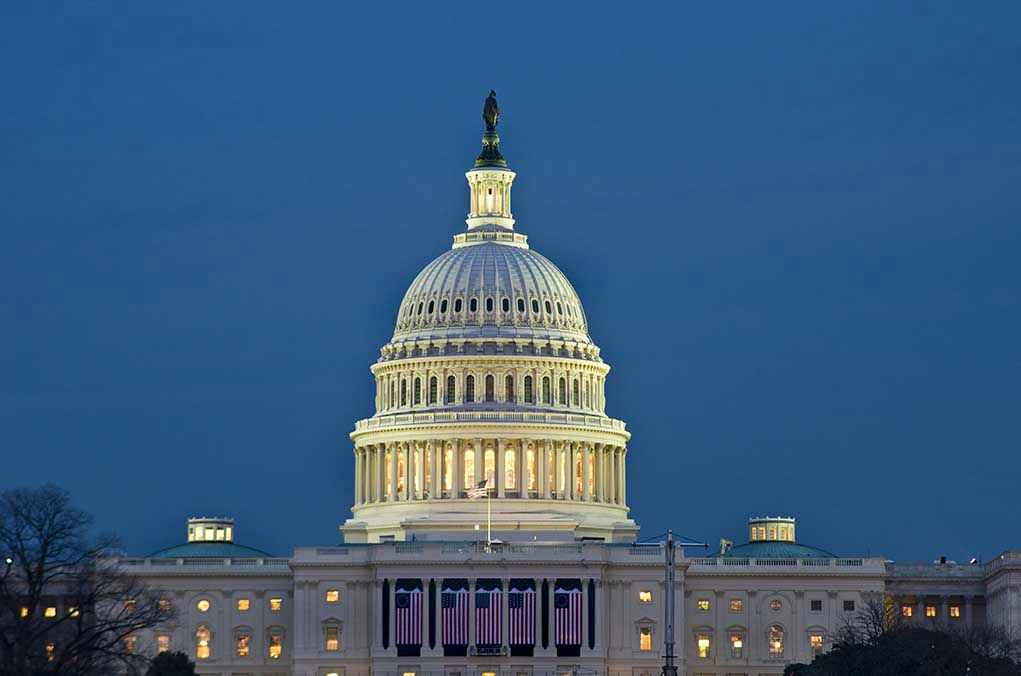
When both parties’ funding proposals crash and burn in the Senate within hours of each other, you know the federal government is careening toward a shutdown with nobody willing to blink first.
Story Snapshot
- Republicans accuse Democrats of holding the federal government “hostage” as October 1 shutdown deadline approaches
- Both House Republican and Senate Democratic continuing resolutions failed Senate votes on September 19, creating legislative stalemate
- White House Office of Management and Budget orders agencies to prepare for shutdown as compromise remains elusive
- Healthcare funding and premium tax credits emerge as primary sticking points between the parties
When Political Theater Becomes Government Paralysis
The accusation of “hostage-taking” reveals just how poisonous the atmosphere has become on Capitol Hill. Republicans claim Democrats are leveraging essential government operations to force through permanent healthcare expansions and tax credit extensions that would balloon the deficit. The charge carries particular weight because it mirrors the exact language Democrats have used against Republicans in previous shutdown standoffs.
What makes this shutdown threat different is the complete breakdown of the traditional negotiation process. Usually, one chamber passes a continuing resolution that serves as a starting point for compromise. Instead, both parties crafted competing proposals that were dead on arrival, suggesting neither side entered negotiations in good faith.
The Healthcare Battlefield That Sparked the Crisis
Democrats structured their continuing resolution around making healthcare premium tax credits permanent, a move that would provide long-term certainty for millions of Americans but cost taxpayers hundreds of billions over the next decade. Republicans view this as fiscal recklessness disguised as emergency funding, arguing that such major policy changes shouldn’t be jammed through during crisis negotiations.
The Republican counter-proposal maintained current spending levels while explicitly blocking the healthcare expansions Democrats demanded. This approach reflects conservative principles of fiscal responsibility, but Democrats predictably declared it unacceptable. The result was a legislative traffic jam where neither side’s proposal could muster even 50 Senate votes.
While Republicans are dedicated to keeping the government open & ensuring stability for seniors, veterans, troops, & families nationwide, Democrats are ready to shut it down & vote AGAINST the needs of MILLIONS of Americans.
The Democrats' Disaster on full display. pic.twitter.com/y2sISPKwu5
— The White House (@WhiteHouse) September 30, 2025
Agency Shutdown Preparations Signal Serious Intent
The White House Office of Management and Budget’s instruction for agencies to prepare shutdown plans represents a significant escalation. Federal agencies don’t undertake these preparations lightly, as they involve determining which employees are “essential” and which services must continue during a funding lapse. This bureaucratic machinery typically only kicks into gear when political leadership genuinely believes a shutdown is imminent.
The timing couldn’t be worse for federal employees, many of whom still remember the financial stress of the 35-day shutdown during 2018-2019. While essential services continue and back pay is eventually provided, the uncertainty creates real hardship for families living paycheck to paycheck. Both parties understand these human costs, yet neither seems willing to compromise their political positions.
The Blame Game Intensifies as October 1 Approaches
Republicans have seized the rhetorical high ground by accusing Democrats of prioritizing partisan healthcare goals over basic government functioning. The “hostage” metaphor is politically potent because it frames Republicans as defending taxpayers against Democratic extortion. However, Democrats counter that Republicans are the ones holding healthcare hostage by refusing to extend programs that help working families afford medical coverage.
The Congressional Budget Office’s analysis of both proposals provided ammunition for each side’s talking points while highlighting the genuine policy differences at stake. Republicans can point to deficit projections showing the cost of Democratic healthcare expansions, while Democrats can emphasize coverage numbers showing how many people would lose benefits under Republican alternatives. These dueling statistics illustrate why compromise has proven so elusive.
Sources:
USAFacts: Government shutdown 2025: What to know
Holland & Knight: Government Shutdown Advisory: Summary of Possible Lapse in Appropriations
GovExec: Sides remain divided, White House predicts shutdown will occur on eve of funding lapse
SRCD: U.S. Government Shutdown in 2025: General Information and Resources












